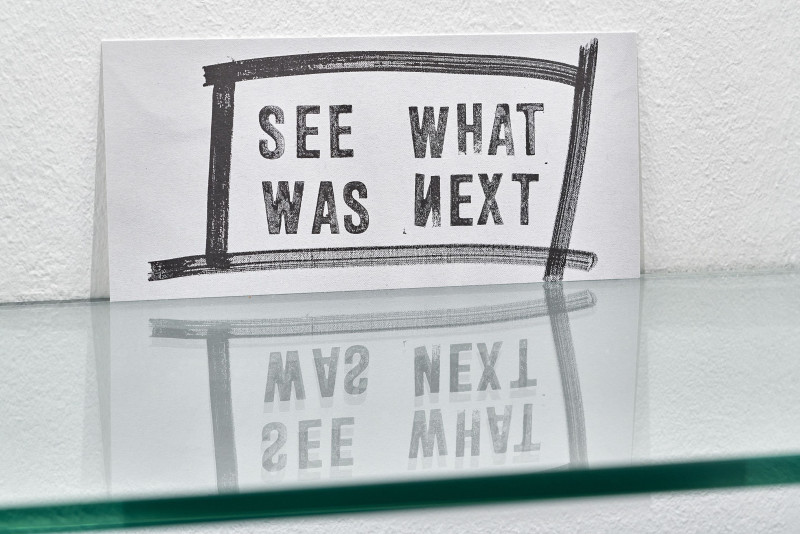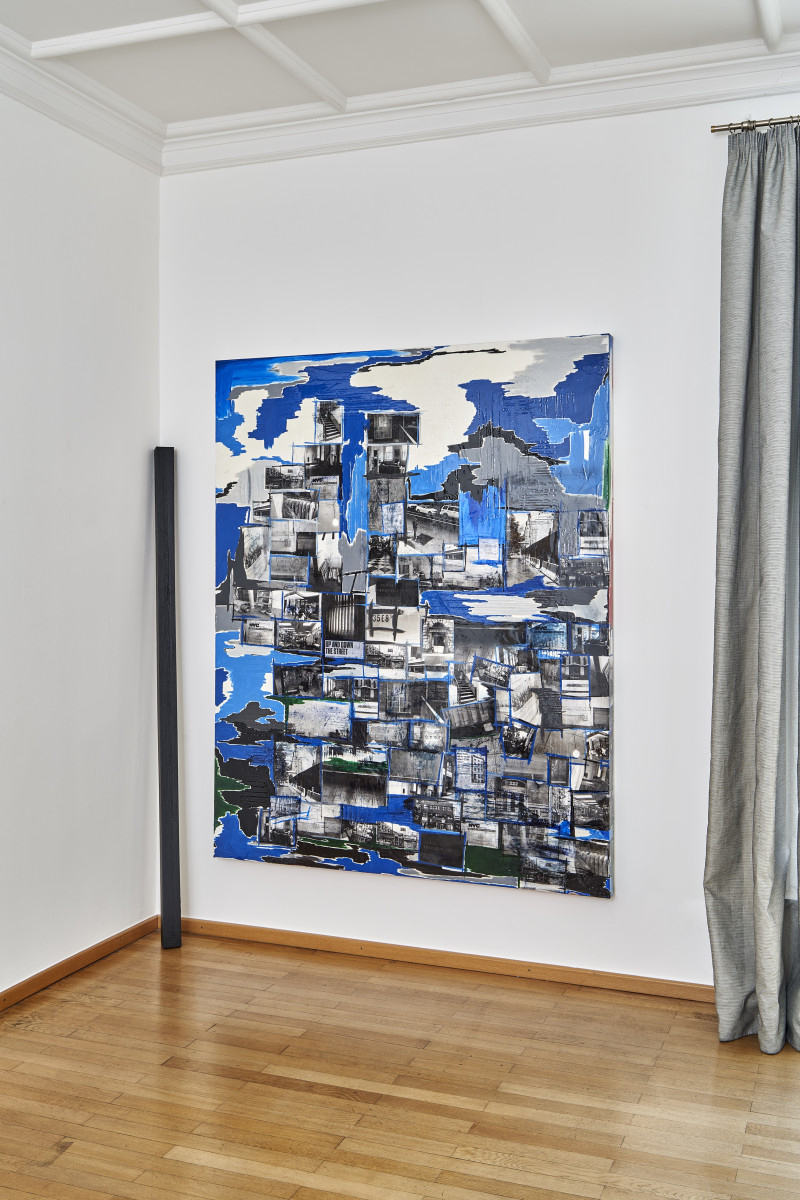See What Was Next. Sociological Considerations on Caro Jost's Concept of Art
Julian Müller, 19 June 2023
A scholarly commentary on Art faces the challenge of conveying knowledge about the subject while avoiding overly ambitious intellectualisation. In the case of Caro Jost's works, even more caution is required, as the subject matter of her art inherently contradicts any form of intellectualisation.

In her works, Caro Jost has spent many years examining everyday life. This, however, presents us with several problems. Since the main feature of everyday life is that its component parts go about their usual business without being remarkable in any way, any artistic approach – but also any scholarly approach – to them is faced with the challenge of engaging with this day-to-day life without aestheticizing, idealizing or indeed intellectualizing it. This would rob day-to-day life of its defining feature: its casualness.
Caro Jost thus deliberately avoids all forms of exaltation and kitsch, instead aiming for the highest possible degree of objectivity. It is no coincidence that before embarking on the path of art, she first chose to study law to gain access to reality. Upon visiting her atelier, we found that we both shared a certain passion for archiving. We keep archives of everyday life, collecting surplus and marginal items. These can be bills, notes, and postcards as well as newspaper headlines – at any rate things that otherwise usually end up in the rubbish. This archival activity automatically forces an engagement in practices of private bureaucracy and, admittedly, idiosyncratic forms of taxonomy and storage, since at the end of the day, the collected items must be clearly registered and categorized.

Caro Jost is by no means the first or the only person to engage with day-to-day life in this manner. There is a long tradition of such work in academia, for example in the fields of sociology, history and cultural anthropology, as well as in art, for example in documentary photography, film or literature. This year’s Nobel prize for literature was also awarded to Annie Ernaux for documenting everyday forms of talk and gestures in her books, thus interweaving her own biography with a collective one. A further literary project of importance in this context was the early internet diary by Rainald Goetz from 1998, which was published in book form a year later entitled Abfall für alle (waste for everyone). Goetz used the new medium of the internet to document his own day-to-day activities, particularly reading, writing, thinking or shopping, and to share these in real time with his readers. In the age of social media, we have long become used to such narratives, but in 1998, this – Goetz named the project “daily text prayer” – was a completely new form of self-representation.
Caro Jost is also interested in all that becomes waste on a day-to-day basis, although her approach is a different – and perhaps more humble – one. She is less concerned with the waste for everyone and more with the waste from everyone. She gathers that which has been left behind and is mostly overlooked. This is surely most evident in her long-term project of STREETPRINTS, several of which are on display in the exhibition at the Center for Advanced Studies. Anybody who sees these prints of streets from New York, Munich or Jerusalem will quickly notice the challenges and difficulties inherent to any dealings with everyday life. This will be illustrated using three keywords which provide insight into the works of Caro Jost.

Dissociation: In contrast to operating theaters, night clubs, laboratories or courts, day-to-day life has no exclusivity of access. Everybody has their own day-to-day life and is, in a certain way, an expert on this life. Nevertheless, most people would find it difficult to identify explicitly what this expertise entails. Art and academia hence do not have exclusive access to day-to-day life, but they have developed exclusive techniques to gain insight into it. Dissociation plays an important role here. It seems that an approach to everyday life often becomes possible through dissociation. Somebody who takes their usual path every day may only pay attention to the street as a street when it hangs on the wall in paint as a print. Caro Jost certainly forces us to do this. Her aim in doing so is by no means a nobilization or beautification of everyday life, but rather the presentation of this necessary act of dissociation.
Seriality: Day-to-day life is characterized by a high degree of monotony and repetitiveness. Most things that we do on a daily basis repeat themselves. We walk, talk, go shopping, eat, read, write, sleep. Every artistic approach to day-to-day life must do justice to this fact and attempt to address or even capture this repetitiveness in some form or another. It is thus no coincidence that the series is such a popular method for the artistic representation of everyday life. Anybody who has visited the exhibition by Caro Jost at the Center for Advanced Studies will have entered a room on the first floor in which a series of street prints is displayed, all showing in an impressive manner the same thing – and yet each one showing something different.
Temporality: In Caro Jost’s works, time plays an important role. Preservation is certainly a significant component of this, as her activity ultimately conserves, creates imprints of reality, removes triviality and stores memory. The works thus have an undeniable connection to the past, but they are never looking backwards and certainly do not indulge in nostalgia. It can rather be said that the works create an imagined future from which the actual present already appears as the past. The title of the exhibition, which plays with precisely these leaps, is thus as consequential as it is wisely chosen: See what was next.
From 27 October 2022 to 31 March 2023, the CAS (Center for Advanced Studies) hosted a selection of Caro Jost's project "See what was next". Over the past 22 years, Jost has visited over 100 cities to take streetprints which document the fast pace of time, place and space.

